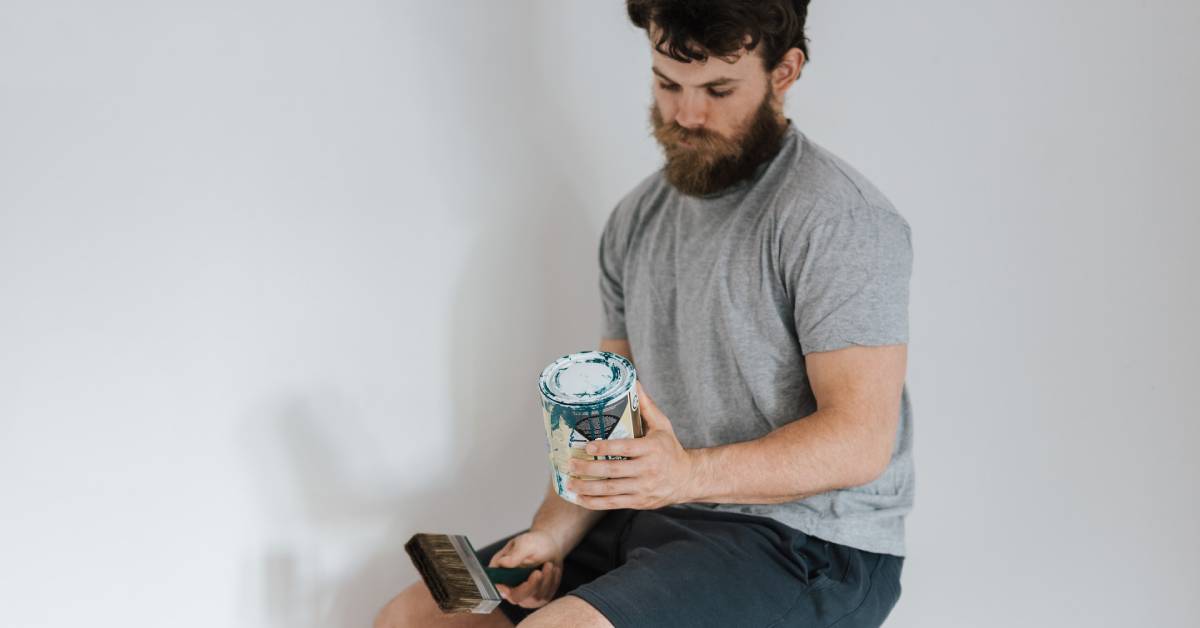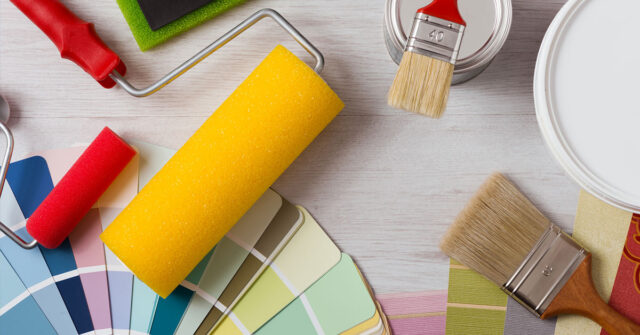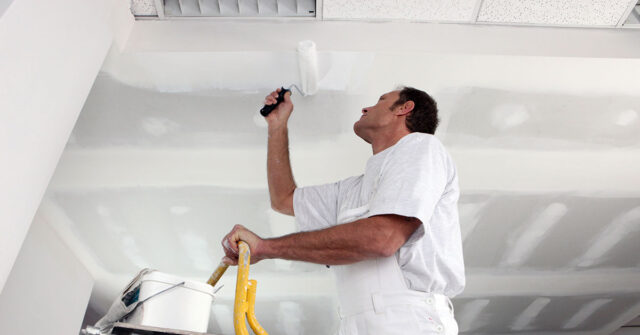Whether you are a professional painter or a homeowner looking to give your house a fresh coat of paint, safety should be your top priority. Painting can pose various risks if not done properly.
This comprehensive guide aims to provide you with the essential safety guidelines for painting.
It covers everything from understanding the basics of paint, selecting the right tools, safety procedures, and potential hazards, to the relevant Australian regulations for professional painters.

Understanding the Basics of Paint
Before diving into the painting process, it’s essential to understand the basics of paint. This includes the different types of paint, Australian standards, and the key components of paint.
Types of Paint
Paints come in various forms, such as oil-based, water-based, and latex paints. Each has its own properties, benefits, and safety considerations.
Oil-based paints, for instance, have a high VOC content, whereas water-based paints are less harmful but may not provide the same finish.
Australian Standards for Paint
Australia has specific standards that govern the manufacture and use of paints. These regulations aim to ensure the safety and health of users.
They cover aspects such as permissible levels of harmful substances, labelling requirements, and safe disposal methods.
Understanding Paint Components
Paint comprises several components, including pigments, binders, solvents, and additives. Each of these has specific functions and implications for safety.
For instance, solvents can produce harmful fumes, while certain pigments can be toxic.
Safety Precautions Before You Begin
Preparation is key in ensuring a safe painting project. This includes preparing your workspace and equipping yourself with appropriate Personal Protective Equipment (PPE).
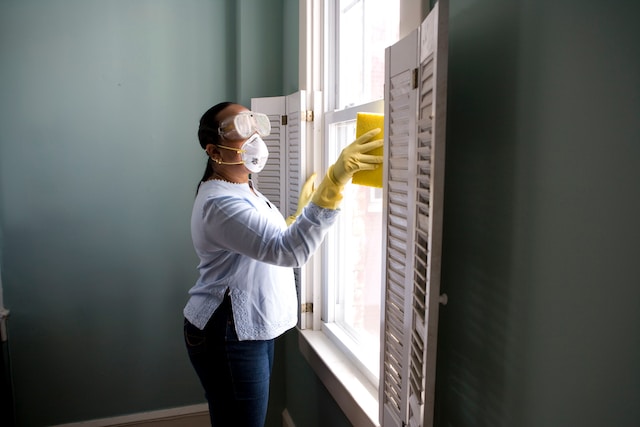
Preparing the Space
A well-prepared workspace can reduce the risk of accidents and exposure to harmful substances.
Remove all furniture, if possible, or cover them with drop cloths. Also, ensure good ventilation by opening windows and doors.
Personal Protective Equipment (PPE)
Wear appropriate PPE, including safety glasses, gloves, and a respirator mask, especially when dealing with potentially toxic paints.
This helps to protect you from chemical exposure and other potential hazards.
Selecting the Right Tools
Using the right tools can not only enhance the quality of your painting job but also increase safety. This section covers the factors to consider when choosing brushes, rollers, and paint sprayers.
Choosing Brushes and Rollers
Brushes and rollers come in various sizes and types. For this reason, you want to make sure you are choosing the most suitable one for your paint job.
Choose one that matches your paint type and the surface you are painting. Also, ensure they have a comfortable grip to prevent hand strain. If you haven’t used a roller before, you can learn how here.

Paint Sprayers: Pros and Cons
Paint sprayers can speed up the painting process and provide a uniform finish. However, they can also produce a mist that can be harmful if inhaled.
Therefore, use them in well-ventilated areas and with appropriate PPE.
Best Practices for Using Paint
How you handle and apply paint can significantly impact your safety. The following are some of the best practices to follow when using paint.
Proper Mixing and Application
Follow the manufacturer’s instructions when mixing paint. Avoid overfilling the paint tray to prevent spills. Apply the paint in even strokes, and avoid splattering or dripping, which can create a slipping hazard.
Dealing with Paint Fumes
Paint fumes can cause a range of health problems, from minor irritation to serious respiratory issues. Ensure adequate ventilation, take regular breaks, and use a respirator when painting in enclosed spaces.
Ensuring Adequate Ventilation
Proper ventilation is crucial when painting. It helps disperse paint fumes and accelerates the drying process. Keep doors and windows open, and use fans to improve air circulation.
Safety Procedures During Painting
While the painting is in progress, there are several safety procedures you should follow. These relate to using ladders, painting high areas, and handling leftover paint.
Ladder Safety
When using ladders, ensure they are stable and well-positioned. Always maintain three points of contact (two hands and a foot, or two feet and a hand) with the ladder.
Never overreach or lean too far to the sides.
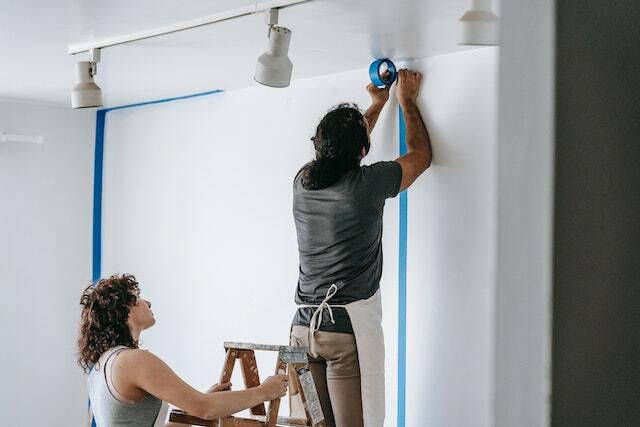
Safely Painting High and Hard-to-Reach Areas
High and hard-to-reach areas can pose a risk of falls. Use long-handled rollers or extension poles to reach these areas.
Also, consider using scaffolding or a platform ladder for a safer and more comfortable work surface.
Handling and Disposing of Leftover Paint
Store leftover paint in a cool, dry place out of children’s reach. For disposal, check with your local council or recycling centre for their regulations. Never pour paint down the drain or into the environment.
Understanding Potential Hazards
Painting can expose you to several potential hazards. These include lead-based paint, chemical exposure, and fire hazards.
Risks of Lead-Based Paint
Lead-based paints were widely used in Australia until their ban in the late 20th century. If your home was built before the 1970s, it might contain lead paint.
Exposure to lead dust or chips can cause serious health problems, so get a professional to remove it safely.
Chemical Exposure and VOCs
Paints can contain harmful chemicals, including volatile organic compounds (VOCs). Long-term exposure to VOCs can cause serious health issues.
Choose low-VOC or VOC-free paints whenever possible.
Fire Safety with Paint
Paints, especially oil-based ones, are flammable. Keep them away from open flames and heat sources. Also, dispose of paint-soaked rags properly as they can spontaneously combust.
Australian Regulations for Professional Painters
Professional painters in Australia are subject to specific regulations to ensure workplace safety. These include required training and certifications and adherence to safety regulations.

Training and Certifications
Professional painters in Australia must undergo training and obtain certain certifications. These ensure they are capable of working safely and delivering high-quality results.
Workplace Safety Regulations
Workplace safety is a critical aspect of professional painting. Painters should comply with the relevant Work Health and Safety (WHS) regulations, including risk management and the use of appropriate PPE.
Cleaning Up After Painting
Cleaning up after a painting job is not just about maintaining cleanliness. It’s also part of safety procedures.
This includes the cleaning and disposal of brushes, rollers, and paint cans, as well as dealing with paint spills.
Cleaning Brushes and Rollers
Cleaning brushes and rollers properly can prolong their lifespan and reduce waste.
Use a paint comb and running water for water-based paint, or mineral spirits for oil-based paint. Always dispose of the cleaning solution safely.
Disposing of Paint Cans
Empty paint cans should be disposed of responsibly. Many local councils in Australia have specific disposal procedures or recycling programs for paint cans.
Never dispose of them in household waste or recycling bins.
Dealing with Paint Spills
For small paint spills, contain them immediately with rags or absorbent material, then clean the area with warm soapy water. For larger spills, you may need to contact a professional cleaning service.
Tips for Sustainable and Environmentally Friendly Painting Practices
Painting can have an impact on the environment, from the production of paint to its disposal.
However, there are ways to minimize this impact, such as choosing eco-friendly paints, reducing waste, and recycling paint cans.
Emergency Procedures
Despite taking precautions, accidents can happen. It’s important to be prepared for emergencies, including providing first aid for paint exposure and reporting paint-related incidents.
First Aid for Paint Exposure
If paint gets into the eyes, rinse immediately with plenty of water. If swallowed, seek medical help immediately.
For skin exposure, wash with soap and water. Always refer to the paint’s safety data sheet (SDS) for specific first aid instructions.

Reporting Paint-Related Incidents
For professional painters, any paint-related incidents should be reported to the relevant workplace safety authority in your state or territory. This helps to prevent similar incidents in the future.
Conclusion
Whether you’re a professional painter or a DIY enthusiast, safety should never be compromised when painting.
This guide has provided you with comprehensive information on safe painting practices. By following these guidelines, you can ensure a safe and successful painting project.

